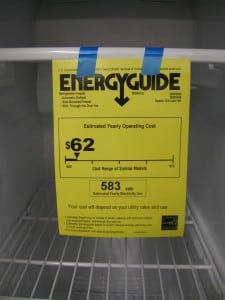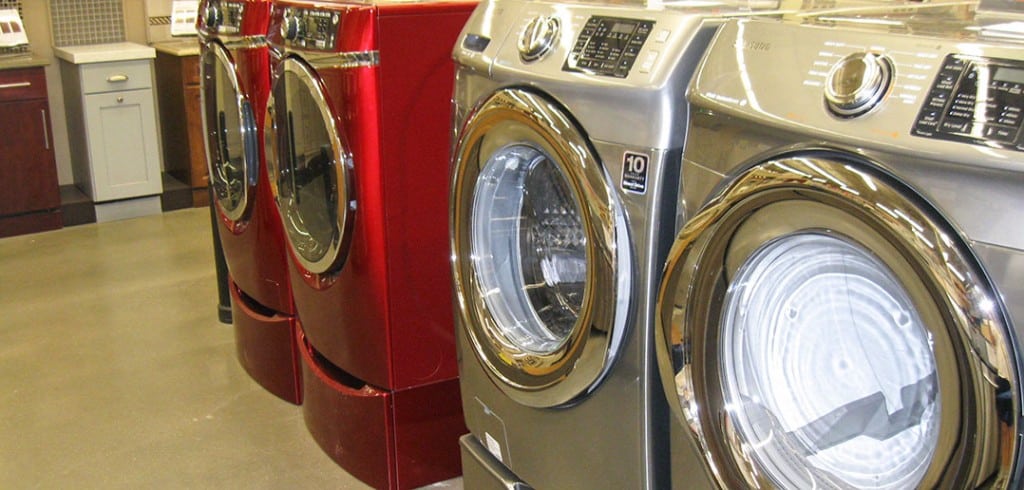Dear Jim: I wonder if I should buy new appliances. Other than just comparing EnergyGuide labels, how can I determine the savings? How can I calculate the cost to use an appliance? — Megan H.
For major appliances, comparing the EnergyGuide label is the best method to determine the cost to use each new one. Based on the purchase price, you can then calculate which appliance provides the best return.
To do a proper payback analysis of the decision to replace your existing appliances, you have to determine the cost to operate your existing appliance. You may have kept the old EnergyGuide label with your paperwork from the old appliance, or you may be able to do an Internet search to find it.
Keep in mind that even if you have the EnergyGuide labels showing annual operating costs, these figures are only averages. If you already are energy-conscious, your current operating costs are likely on the low side, and your savings from installing a new appliance will be lower than the average annual cost figures indicate.
There are a couple of ways to calculate the cost to use an electric appliance. The simplest and quickest way is to download the “Save Energy, Save Money” app from TogetherWeSave.com. This easy-to-use app provides several calculators for appliances found throughout your home.
 Another way to calculate the cost of appliance use is with an actual formula. First, find the wattage rating on the appliance’s nameplate. Divide this by 1,000 and multiply the result by your price per kilowatt-hour electric rate to get the operating cost per hour. If the nameplate lists amperage, multiply it by 120 to get watts. For appliances with a thermostat, reduce the operating cost by about 50 percent.
Another way to calculate the cost of appliance use is with an actual formula. First, find the wattage rating on the appliance’s nameplate. Divide this by 1,000 and multiply the result by your price per kilowatt-hour electric rate to get the operating cost per hour. If the nameplate lists amperage, multiply it by 120 to get watts. For appliances with a thermostat, reduce the operating cost by about 50 percent.
The rate of efficiency improvements and meaningful new features in major appliances are slowing so there is no need to wait if you really need a new one. One exception is televisions because their prices are constantly dropping and their features and quality improving. In general, though, it makes economic sense to keep your older major appliances about 10 years or until they need expensive repairs. If you make a concerted effort to use your older appliances as seldom and as efficiently as possible, they won’t cost much more to use than newer ones.
If you have a large family and do much laundry, the cost to use the clothes washer also includes the cost of the water and the cost to heat the water. Upgrading your water heater to perhaps a heat pump water heater will also reduce your dishwashing and bathing costs in addition to laundry costs.
New front-loading clothes washers are typically more energy-efficient than top-loading ones because front-loaders require less heated water. The actual electricity use by the motor is about the same for both types. Also, since a front-loader washer uses less water, less detergent needs to be used.
A secondary but significant savings with a front-loader is a faster spin cycle. The horizontal-axis tub design can spin very fast. By spinning faster, more water is extracted from the rinsed clothes. This greatly reduces the drying time so the dryer needs to run less, using less electricity.
When selecting a new dishwasher, make sure it has a built-in water preheater. This allows you to set your water heater temperature lower without sacrificing the cleaning effectiveness of hotter water. Spend a little extra and select a model with many cycles. With more cycles, you can more accurately target the cycle length to the requirements of each load.
Just like a house, a smaller refrigerator has less interior space to keep cool and uses less electricity. Also, with a smaller model, there is less insulated outside surface area to absorb heat, which the compressor must remove to stay cold inside.
Don’t go to extremes on the small size, though. Adequate space inside the refrigerator for convenient access to items is important. If you have to keep the door open while you move things around to find what you want, more energy will be wasted than the amount you saved with a smaller model. Modern refrigerators such as Energy Star models use about half the energy of a 10-year-old model.
There’s no major difference in the energy efficiency of the various types of new ranges. Convection ovens bake faster so they use less electricity for some foods. Induction elements lose less heat to the room air so overall electricity use is somewhat less. The best way to save when cooking is to use the microwave or another smaller countertop appliance whenever possible.



